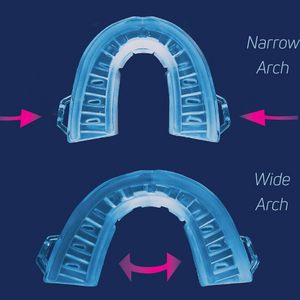Aug 22, 2023
HOW DOES SLEEPING POSITION AFFECT HEALTH?
HOW DOES SLEEPING POSITION AFFECT HEALTH?
Sleeping position affects your health in many ways, and there are many ways to sleep: on your side, back, belly, fetal position, sitting, head elevated, feet elevated, even strapped to a space capsule. Keep in mind that most of us shift around during an eight-hour stint of sleep about 15 times, but we are able to train ourselves to spend most of the night in two or three comfortable positions. We change positions as our brain senses the body’s pressure points on the mattress where blood is not circulating well; therefore we prevent pressure sores. Children change positions much more than adults, which you have probably noticed if your kid is in your bed. This article discusses many sleeping positions, which ones are good for us and which are not.
HOW DO ASTRONAUTS SLEEP IN SPACE?
Think of astronauts in space. Without gravity, simply lying down on a bed is not an option. According to NASA, astronauts can sleep in any orientation because there is no “up” or “down” in space; however, they have to attach themselves to something so they don’t float around and bump into things. Space station crews typically sleep in sleeping bags located in small crew cabins. Each crew cabin is big enough for one person. Generally, astronauts are scheduled for eight hours of sleep at the end of each mission day.
GRAVITY CAN MESS WITH US
Sleeping with your head lower than your feet can cause blood to pool in your head and neck. This can lead to a feeling of pressure in the head, headaches, and dizziness. It can also lead to an increase in heart rate and blood pressure. The carotid artery contains a barometer (carotid sinus) to detect the increased flow of blood to the brain, and it signals the heart to lower blood pressure temporarily so you don’t stay red-faced and head-rushed very long; however, being upside down too long can increase the risk of a burst aneurysm or other cardiovascular problems.
HOW DOES SLEEP POSITION AFFECT SNORING?
According to WebMD, your sleep position can make you more likely to snore, have back pain, or get a good night’s rest. It can also overwork and fatigue muscles that support joints, especially the spine, causing dysfunction, “kinked neck” and pain. For example, sleeping on your belly can strain your neck because it’s rotated to allow breathing and also your lower back because of the tension it places on the lordotic curve of the lumbar spine. Sometimes sleeping on your back can cause this strain, and propping knees up with a thick pillow can alleviate this tautness and be more comfortable for the low back. Generally, sleeping on your back will also make snoring or sleep apnea worse.
SIDE-SLEEPING CAN REDUCE SNORING AND HELP DIGESTION?
According to HowStuffWorks, sleeping on your side is most effective for “tongue snorers,” where the chief cause of the obstruction is a relaxed tongue that restricts the airway for free breathing; however, if the cause of your snoring is allergy, congestion, or obesity, side-sleeping may not help much.
Sleeping on your side is often recommended as a simple and effective strategy to reduce snoring. This sleep position can potentially prevent the base of the tongue from collapsing into the throat, keeping the airway open and unrestricted.
Healthline says that sleeping on your left side is best for digestion because it promotes the passage of food and waste through the digestive tract. Some people with GERD (Gastro-esophageal Reflux Disease) have fewer episodes of acids coming up to the throat when sleeping on the left side.
Right-side sleeping may put less stress on the heart, especially in older adults, but scientists are not adamant about this. As we age, we tend to prefer side-sleeping more and more.
MEN VERSUS WOMEN
Women prefer the fetal position more than men do. During pregnancy, women’s sleep position becomes very important, not only for protecting the baby, but also for providing sufficient, recuperative sleep for the mom. It is strongly recommended that pregnant women don’t sleep face-up on their backs, but switch to a side sleeping position, to avoid back strain and pain. Back sleeping also increases the risk of snoring and lowering blood pressure. The American Pregnancy Association recommends a left-side sleeping position. Also noteworthy is that sleeping on the left side during pregnancy increases the flow of blood and nutrients to the placenta. Men who are not obese tend to sleep just fine on their backs.
WHAT ABOUT DREAMING?
Some studies point to side-sleepers as the more prolific dreamers, but they are inconclusive. What is not inconclusive is that most dreams occur during the last phase of a sleep cycle, called REM (Rapid Eye Movement), so if your comfortable enough to sleep deeply, then you’ll likely dream, though you may not remember it.
SUMMARY
Sleeping preferences vary individual to individual; however, positions such as belly-sleeping tend to cause neck and low back strain. Side-sleeping is recommended for most people, especially adults and pregnant women. Sleeping on one’s back increases incidence of snoring and sleep apnea.
We all have a favorite sleep position, the one we happily settle into, without even thinking about it, at the end of a long day. What’s yours? Mine is on my stomach (I know, it’s terrible), but I am usually on my right side, because my French Bulldog is snoring on my right side.
Sleep position is definitely a matter of preference. But it’s a lot more than that. Our sleep positions have a wide range of effects on the body. Think about it: You spend roughly one-third of your life asleep—that means one-third of your time is spent relatively motionless in a handful of sleep postures. These sleep postures can affect how well and how much we sleep and have an impact on our health. There’s research that indicates sleep position influences our dreams, and even has a connection to our personality!
article continues after advertisement
Read on to find out how your sleep position might be helping (or hurting) your health and sleep, and what your sleep posture might say about who you are and how you dream.
It’s usually best to go with what is most comfortable, as long as it does not cause pain (back or neck pain in particular).
Factors that affect sleep position
When we think about sleep positions, comfort is the first factor that comes to mind. Our sleep position preferences are highly individual. You might feel squished sleeping on your stomach, but your bed partner loves it. The curled-up fetal sleep posture that feels just right to you makes your bed partner feel cramped and stiff.
Comfort is one significant factor, but it’s not the only one. There are other, often less discernible factors influencing the sleep positions we choose.
Age
As we age, more of us gravitate to a side sleeping position. Research shows that side sleep posture begins to become a preference in early adulthood, and grows increasingly so as we get older. Studies show that, in particular, a preference for right-side sleeping emerges during older adulthood. There are indications that this preference for right-side sleeping in older adulthood may be a way of protecting heart function during sleep—but scientists aren’t sure about this explanation, yet.
With age, we also move around less during the night, shifting positions less frequently and spending more time in one sleeping position before moving to the next. Research shows children shift sleep position more than twice as often throughout the night than adults over 65 do. Anyone who has had their child in bed with them, knows this to be very true!
article continues after advertisement
In general, sleep position matters more with age. Older adults face more health challenges, including challenges to sleep. Older bodies are less flexible and more prone to stiffness and pain. You might not have thought about your sleep position at all in your 20s. But by your 40s or 50s and beyond, your sleep position can have a significant impact on how comfortably and soundly you sleep.
Like many other aspects of sleep, men and women have different preferences and different needs when it comes to sleep position. Studies suggest that women are twice as likely to prefer sleeping in a fetal position as men are.
As you’ll soon read, there are a whole range of health factors that influence what makes the right sleep position for each of us.
Sleep position, personality, and dreaming
This is some pretty fun, interesting science. There’s not a lot of research into the topic, but some scientists and body language experts have looked into connections between sleep position and personality. According to their work, our sleep position can reveal insights about our personalities, our mood, and our approach to life.
article continues after advertisement
Sleeping on your back is associated with self-confidence. Back sleepers may also be stubborn and have high expectations for themselves and other people. Depending on whether you sleep with your arms down at your sides (reserved) or arms and legs outstretched (relaxed, open-minded) might also have an influence.
Sleeping on your stomach is linked to defensiveness, as well as perfectionism and sensitivity to criticism. Researchers point to a tendency for stomach sleepers to feel overwhelmed and lacking control in their lives.
Side sleeping (which tends to be very popular) is linked to being relaxed, open-minded, and able to compromise. Whether you sleep on your right side (more likely to smoke and rely on caffeine) left side (creative, well educated), with your arms at your sides (trusting and possibly gullible, also maybe rigid thinkers) or arms outstretched (tough on oneself and others, possibly suspicious, also curious about the world) may also influence your personality, outlook, and behavior.
Sleeping in a fetal position, research suggests, is associated with sensitivity and anxiety, as well as a desire for comfort. Fetal position sleepers may be conscientious and organized, with a tendency to overthink things. Initially shy, research says underneath that reserve they’re warm-hearted.
And what about dreams? Research suggests a correlation between sleep position and dream type. If you sleep on your side and experience disturbing dreams, you might want to consider switching sides? Right-side sleepers may experience fewer nightmares than left-side sleepers. Back sleepers also may be more likely to have nightmares—and research indicates they may also have a harder time recalling their dreams. Stomach sleepers, according to studies, experience dreams that are more vivid, intense, and sexual. They’re also more likely to have dreams in which they’re immobilized or restrained.
article continues after advertisement
The pros and cons of common sleep positions
You know what sleep position you prefer. There is no single sleep position that is best for everyone. In addition to comfort, the right sleep position depends on your individual health conditions and concerns.
Sleeping on your back
This is not a very popular sleep position—the National Sleep Foundation reports only about 8 percent of sleepers choose this pose. But in fact, it’s the optimal sleep position for many people. Sleeping on the back allows our bodies to fall into their natural alignment, with our weight distributed evenly. That means there’s no undue pressure on any particular point. For this reason, it’s the position that typically requires the least re-adjusting throughout the night, which is likely why sleeping on one’s back tends to lead to more refreshing sleep.
Back sleeping is often your best option if you experience physical pain or stiffness. People with arthritis often find it easier to sleep soundly and more comfortably on their backs. The most common exceptions? Back pain can make sleeping on your back uncomfortable and counterproductive. And some types of neck pain may also be aggravated by sleeping on your back. When it comes to sleeping well with pain, it’s important to try different positions to determine what gives you the most comfort and relief from tension. Here are some good sleep tips from the Arthritis Foundation for sleeping well with arthritis pain.
Sleeping on your back can also help reduce nighttime symptoms of GERD or acid reflux (but stay tuned, because there may be an even better sleep position for GERD sufferers). If you have acid reflux and opt to sleep on your back, make sure your esophagus is positioned higher than your stomach—a good, supportive pillow should do this.
And if you’re worried about wrinkles and signs of aging on your face? Back sleeping is your friend. That’s because when you sleep on your back, you’re not crunching any part of your face into the pillow, creating lines that can actually become wrinkles. Not having your face against a pillow may also help reduce acne breakouts.
When is back sleeping not a good idea? If you snore or have obstructive sleep apnea. Sleeping on your back can aggravate snoring and make the airway more likely to collapse, leading to more frequent episodes of apnea. People who snore or have sleep apnea are better off sleeping on their side or stomachs. In people with OSA, avoiding back sleep has been shown to reduce blood pressure.
Sleeping on your side
This is a popular sleep position, and I’d call it the second most optimal for health, after back sleeping. For people who snore or have sleep apnea, switching to a side sleeping position can help reduce symptoms, leading to fewer disruptions and better rest (both for snorers and bed partners). Sleeping on your side can help reduce back and neck pain. I wrote recently about carpal tunnel syndrome and its relationship to sleep. Side sleeping may be the right position for you if you have carpal tunnel—what’s most important is that you protect your wrists from pressure during sleep.
Sleeping on your side appears to help the brain’s lymphatic system clear waste more effectively than sleeping on the back or the stomach. The ability of our brain's waste removal system to flush out toxins and harmful proteins is critical to helping guard against neurodegenerative diseases, such as Alzheimer’s, Parkinson’s, and dementia.
Choosing to sleep on your right side or left side can make a difference to several health conditions.
Left side sleeping is beneficial if you have acid reflux. Studies show acid reflux is worse when people lie on their right side. Pregnant women are advised to sleep on their left side, to help circulation and blood flow to the placenta. Left-side sleeping may help digestion.
There’s an ongoing question about whether a left-side or right-side sleep position is more healthy for our hearts. Research shows that right-side sleeping may lower nervous system activity, which reduces heart rate and blood pressure. Some scientists think the age-related preference for right-side sleeping is an instinctive, protective response for the heart. And studies show that people with heart failure tend to avoid sleeping on their left sides.
What are the downsides of side sleeping? You’re more likely to develop wrinkles than if you sleep on your back, because of the pressure put on the side of your face. You’re also more likely to disrupt circulation in your arm, because of the pressure of your body. This can cause the uncomfortable, tingling pins and needles feeling, which often leads people to wake during the night. Side sleepers will typically shift during sleep more often than back sleepers, which may lead to less restful sleep.
Sleeping in the fetal position
A curled-up variation of side sleeping, this is apparently the most popular sleep posture, especially with women, according to research. Sleeping in a fetal position can have similar benefits to side sleeping, including reducing snoring, relieving pressure on your back.
When the fetal position isn’t ideal? Pulling your body into a tight curl may leave you feeling stiff the next morning. And your breathing can be restricted in the fetal position, because your diaphragm can’t function as effectively. If you feel most comfortable sleeping in a fetal position, try using a body pillow to keep yourself from curling up too tightly.
Sleeping on your stomach
The National Sleep Foundation says only 7 percent of sleepers opt for this sleep pose. I have a handful of stomach sleepers as patients at any given time. Generally, I consider this to be the worst of all options, with occasional exceptions. Stomach sleeping can help reduce snoring and sleep apnea, so it may be a smart choice for people with mild versions of these conditions who can’t get comfortable sleeping on their sides.
The problems with sleeping on your stomach? There are a number of them. Stomach sleeping can be hard on your back and neck, causing additional pain and discomfort. That’s because when you’re stretched out on your stomach, it’s practically impossible to keep your spine and neck aligned and not under pressure. Your neck is turned at a 90-degree angle from the rest of your body and elevated by your pillow. That’s a recipe for neck pain and strain. Sleeping on your stomach causes a pronounced curve in your spine—it’s sort of like sleeping in a back bend all night—which puts pressure on your lower back and can cause pain and stiffness. Stomach sleeping also pushes your face into your pillow, which can lead to more wrinkles and signs of aging.
The right sleep position for you? It’s the one you’re most comfortable in, which gives you the highest quality rest and takes into consideration your specific health issues. If you’re not sleeping comfortably, try switching postures and see if you can improve your nightly rest.
Sweet Dreams,
Michael J. Breus, Ph.D., DABSM







